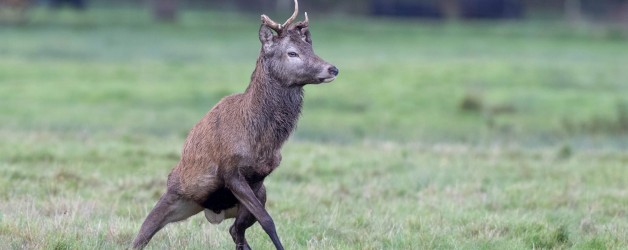During our recent Red Deer Rut Watch event in Killarney National Park, Co Kerry a small number of Native Red Deer were observed with difficulties walking and severe antler deformities. On making further inquiries it is understood seven Red deer were showing similar symptoms. Local Department of Culture, Heritage and the Gaeltacht staff were notified of the issue and it is understood are taking appropriate action and testing. The condition has shown in young male deer and females with no evidence of symptoms in mature stags. Prior to the rut, female deer and young males tend to feed in the same area, with mature stags forming bachelor herds and feeding in different areas.
While the cause of the symptoms are unknown and subject to further tests, the symptoms are consistent with Perennial Ryegrass Staggers, a poisoning by peramine, lolitrem B, and other toxins that are contained in perennial ryegrass (Lolium perenne) and produced by the endophyte fungus Neotyphodium lolii. Symptoms can include tremors, convulsions, antler deformities, difficulties walking and death. It is not known if Ryegrass is present in Killarney National Park however deer regularly feed outside the National Park.
There is no known treatment to reverse the symptoms of Ryegrass Staggers, in farmed deer, animals can be moved to non-infected pastures to prevent escalation of the side effects however in Killarney National Park the deer are free roaming wild deer so this is not possible. Often Ryegrass Staggers is confused with Grass Staggers (Tetany) which is linked to low levels of magnesium and generally relates to farm animals and controlled feeding.
Red Deer have continuously existed in Co Kerry for over 6,000 years and are of national conservation importance as our last remaining herd of native Red Deer, the source and cause of this condition needs to be identified and addressed as a matter of urgency.
Photograph by Christopher Brown, Dublin

